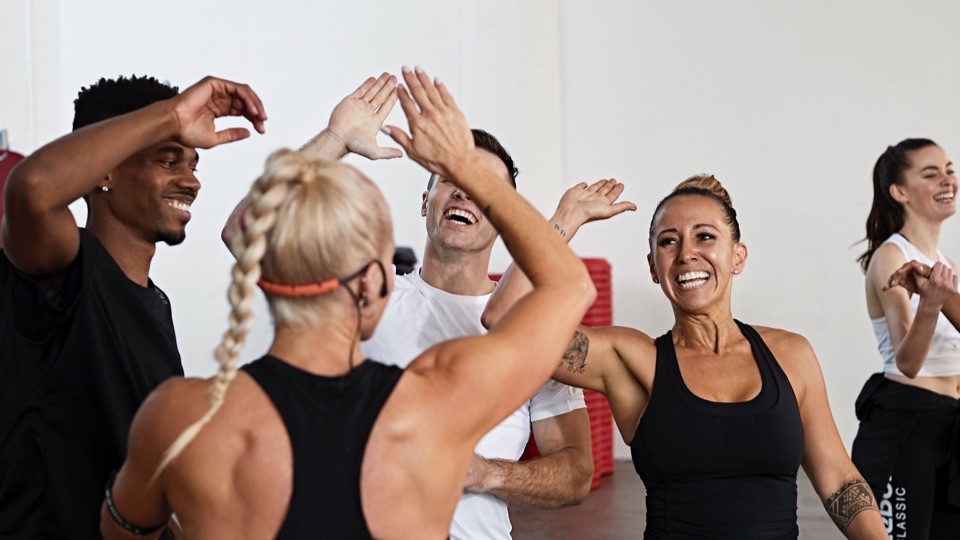‘Gyms aren’t coming back. Here’s how you’ll work out in the future’ (Fast Company)
‘Are gyms dead? Why Home Workouts Are Here to Stay’ (Wall Street Journal)
‘Covid exercise: 'I'll never go back to the gym again' (BBC)
These are just three of the many headlines to have breathlessly declared the death of gyms in recent months, suggesting the 2020 digital fitness boom has consigned bricks and mortar facilities to the scrap heap. It’s never taken much for the media to bash gyms, even in the boom times. Factor in rolling COVID lockdowns, with PR pushes from lavishly-funded fit-tech firms and it was somewhat inevitable that such headlines should emerge.
Peddling dubious polls and abstract analogies, a parade of “New Normal’ Nostradamuses have popped up to tell us that ‘X is the new Y’ and ‘Z is so 2019’. Such has been the slew of negative headlines and strangely subservient journalism – many of the above headlines draw their sweeping conclusions based on a single poll or quoted source (often with a vested interest) – that it’s becoming increasingly difficult to separate fact from fiction.
So what do the numbers actually say? Here we highlight the most common myths about the future of fitness:
Myth 1. Home workouts are the ‘new normal’
The rise of home workouts has been portrayed by trendspotters as a sudden shift sparked by COVID, but it’s actually the acceleration of a trend that’s been taking hold for some time.
The 2019 Global Consumer Fitness Survey showed 85 percent of us who belonged to a gym also exercised at home – and that was before COVID struck. Home workouts were an established part of the ‘old normal’. But with tech giants betting big on digital fitness, the bar is being raised. Increasingly we are able to enjoy a seamlessly connected fitness experience, which suits our lifestyle and enables us to work out on our terms. This is typically a blend of home sessions and in-club workouts.

Myth 2. People don’t want to return to gyms post-pandemic
Despite media proclamations that the COVID-inspired home fitness boom would spell the end of fitness facilities, research suggests the majority of us can’t wait to get back to our fitness club. An October 2020 IHRSA report found that 95 percent of members miss at least one aspect of their club and more than half are dissatisfied with their lockdown fitness routines.
After coming out of lockdown, fitness clubs in China, Japan, New Zealand and the UAE have reported reaching upwards of 95 percent of pre-COVID attendance levels in recent months. Meanwhile, a recent ClubIntel report – which surveyed 2,000 club members from across the US – found most clubs can expect their post-COVID membership levels to range from 65 to 84 percent, in the early months after reopening, with a range of 75 to 80 percent most likely.
88 percent of gym members plan to use their facility the same amount, or more than before, once it has reopened.
Planet Fitness CEO Chris Rondeau predicts the US is headed toward a post-pandemic fitness boom "like we've never seen." He said the 2,000-strong chain’s 14 million members are now steadily coming back and that 90 percent of Planet Fitness locations are open to the public today.
"COVID fatigue is real," Rondeau told Business Insider. "People are coming out and joining, and they're not canceling at elevated levels right now. I'm pretty confident that the first quarter here we'll begin to start adding members and have growth for a broad section of our stores. I'm happy to put last year behind us."
Meanwhile in Europe, nine in 10 members intend to return to the UK's gyms and leisure centers, according to The COVID-19 Impact Report from ukactive and 4global. Using modeling based on millions of customer visits, combined with multiple consumer and market surveys, the report found that 88 percent of gym members would use their facility the same amount, or more than before, once it reopened.

Myth 3. Digital platforms are set to cannibalize fitness clubs
Another recurring theme pushed by certain fit-tech firms has been how digital fitness will cannibalize health clubs and steal their members. But the numbers contradict this, suggesting both are in fact helping bring more people into fitness.
As the digital fitness revolution has gathered pace in recent years, gym memberships and attendance levels have continued to increase. Europe – a market that’s been an early adopter of digital fitness – witnessed club member growth of 66 percent from 2009-2019. While in the US, Americans increased their use of health clubs by 45 percent from 2010 to 2019, growing from 4.6 billion visits to health clubs in 2010 to 6.7 billion in 2019.
With an estimated 375,000 fitness apps now in existence, the evidence suggests digital fitness is bringing more people into the world of workouts. Now, anyone with an internet connection can access a world-class workout. By taking the club experience into people’s homes, gyms and fitness afficionados can reach huge swathes of the population who wouldn’t typically visit a club and help them start their fitness journey.
Research from fitness facilities developer Alliance Leisure indicated that 96 percent of consumers who tried a workout from a club during lockdown said they would use that facility when it reopened. Meanwhile, a November 2020 survey of 9,000 LES MILLS On Demand (users found 63 percent of non-gym members are interested in trying live LES MILLS classes in a club.
Myth 4. Instructors will be replaced by technologY
Group fitness Instructors have been hit particularly hard by lockdown, prompting many to predict they’ll ultimately be replaced by AI coaching and superstar livestreamers. But Instructors will in fact be integral to the future growth of fitness – one driven by social interaction.
Having spent 2020 predominantly in isolation, people will be craving connections on a personal level with brands and like-minded consumers as we emerge from the pandemic. The role of the Instructor will be key to creating powerful communities and offering engaging social exercise experiences. By becoming social hubs for communities, fitness clubs can assume the role previously filled by pubs and places of worship – whose numbers continue to dwindle.
The rise of social fitness will see Instructors at the heart of fitness experiences, mixing hard and soft skills to bring enjoyment and results. In an age of automation and digital disruption, inspirational individuals are the only unique selling point in the gym that rivals can’t copy. A single great Instructor can attract hundreds of members to a club over time, spreading life-changing fitness wherever they go.

Myth 5. Fitness clubs are elitist and don’t serve wider society
One of the brightest spots of 2020 has been the renewed sense of importance that governments – and society in general – have attached to health and fitness. Far from being dismissed as a niche segment for the elites, fitness clubs have been increasingly recognized as the backbone of communities, playing a vital role in supporting physical and mental health.
Strong lobbying efforts from the likes of IHRSA, ukactive, EuropeActive and HCM Magazine – working closely with clubs and Instructors – have resulted in many policy wins for the sector and a raft of positive headlines. Several countries in Europe have exempted gyms and leisure facilities from their lockdown measures in recognition of their role in keeping people fighting fit in the battle against COVID.
Research from Liverpool’s John Moores University found that two-thirds of the UK’s cancer prehabilitation and rehabilitation support services are delivered in public fitness facilities, while governments have increasingly recognized the wide-ranging benefits clubs deliver to their communities.
The UK government's Chief Medical Adviser, Chris Whitty, put it best when he said that being physically active was "very important to long-term health" and crucial for keeping people fighting fit during the ongoing pandemic. He added: "There is no situation, there is no age and no condition where exercise is not a good thing… exercise is one of the best things you can possibly do."
Myth 6. Gyms are too unhygienic to exercise in post-pandemic
The early months of the pandemic were characterized by media misinformation as gyms were branded as ‘Petri dishes for bacteria’ as articles spread the myth that COVID can be transmitted via sweat (it can’t). However, a steady stream of research papers and reports have debunked these notions, showing gyms to be extremely low risk for COVID transmissions.
The latest SafeACTiVE study (commissioned by EuropeActive and carried out by Sheffield Hallam’s Advanced Wellbeing Research Centre (AWRC) and King Juan Carlos University in Spain) analyzed more than 62 million fitness facility visits since September 2020 and found that the average infection rate is 0.78 per 100.000 visits – with only 487 positive cases reported from operators in Europe.
And in New Zealand, the Les Mills Takapuna club won plaudits for its safety measures after zero in-club transmissions were recorded when an infected member attended three group exercise classes in 18 hours, coming into close contact with 86 members in the process. Meanwhile, multiple governments have exempted fitness facilities from tighter COVID restrictions and prioritized their post-lockdown reopening in recognition of the extremely low transmission rates in these facilities and the significant physical and mental health benefits they bring to the communities they serve.
There is no situation, there is no age and no condition where exercise is not a good thing… exercise is one of the best things you can possibly do.
Myth 7. Group workouts are a thing of the past
Lockdown has brought great progress in the range of options for people to stay active at home, leading some to question whether we actually still need gyms to service our fitness needs? After all, no one owns the patent to the press up, and there’s no finer treadmill than the great outdoors. So why is it that those of us who belong to a gym are on average 14 times more active than non-members?
There are many practical reasons for this – most people don’t have the space, money or equipment (particularly if you’re a weight lifter) for an adequate home workout. But a key reason is that clubs don’t just serve up fitness, they provide motivation. And motivation remains a key ingredient for regular exercise adherence – it’s the very reason we have a gym industry.

Among the most powerful motivators are the accountability and sense of connection we get from working out with others. Nowhere is this more evident than in a live group workout.
“Absolutely nothing beats a live class,” says Les Mills Chief Creative Officer Dr. Jackie Mills M.D. “There’s always an amazing vibe created in the room, the loud music is pumping, and you’re all working together and pushing each other. The sense of connection and accountability can’t be beaten.”
Absolutely nothing beats a live class … There’s always an amazing vibe … the loud music is pumping, and you’re all working together and pushing each other.
Plenty of studies show this sense of connection and accountability pays dividends. Research indicates that when we work out alongside others, we’re far more likely to stick with exercise than if we go it alone. Science shows that we get more enjoyment and satisfaction when we work out in a group. And there’s evidence that when we’re surrounded by the healthy actions of others, it rubs off on us too.
Home workouts undoubtedly play an important role in helping us find our feet and build confidence in private – as well as providing convenience for the time-poor and home workers. But the key to exercise adherence is motivation, and after months of isolation for much of the world’s population, clubs are ideally-placed to meet the yearning for community that we’ve all experienced during lockdown and give us a much-needed lift.
KEEN TO LEARN MORE ABOUT WHAT’S ON TREND IN THE WORLD OF FITNESS?
Discover the ab training trends of the future.
See what explosive new martial arts trends are on the horizon.
FIND A WORKOUT WORK OUT ON DEMAND










